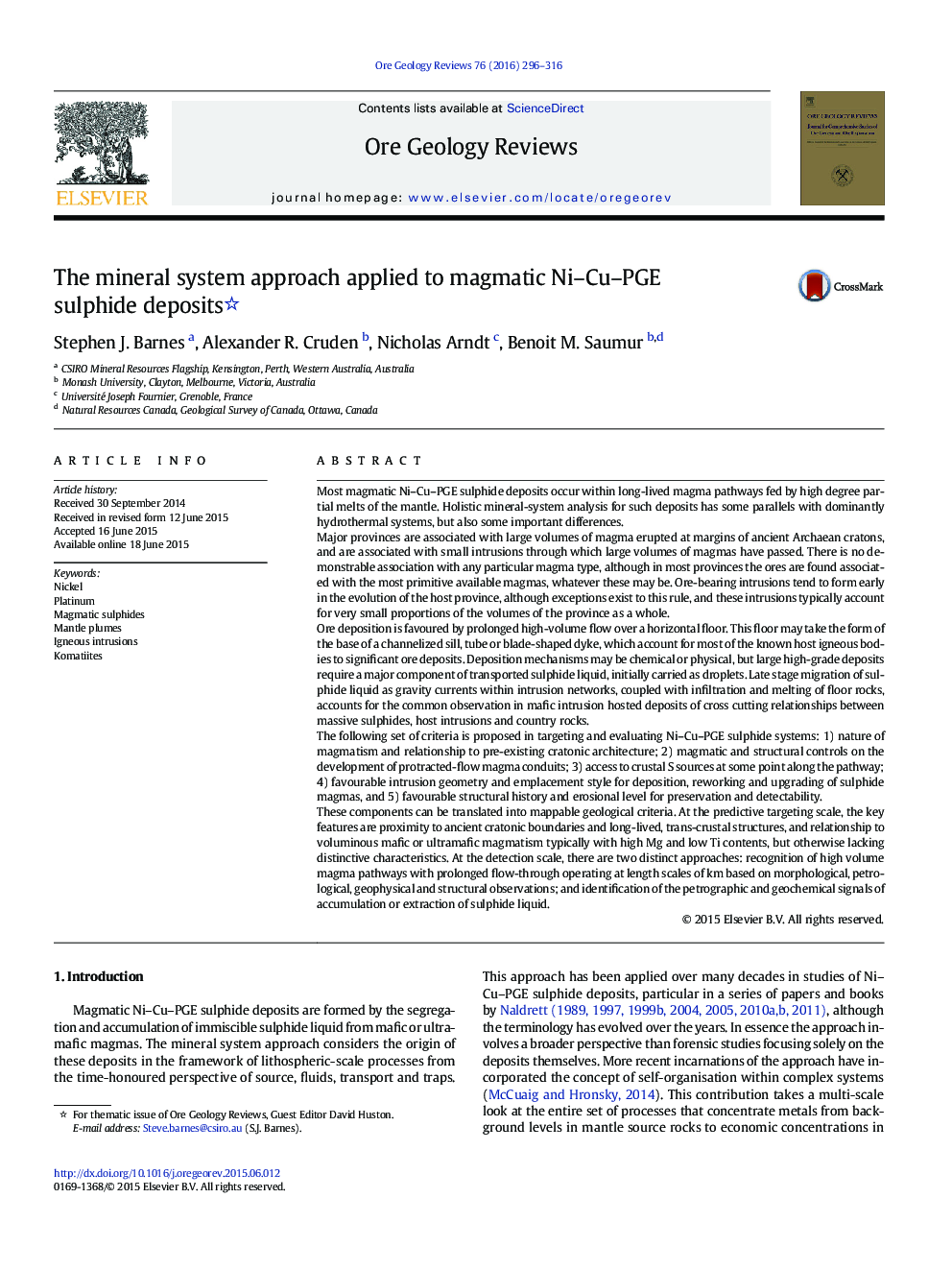| کد مقاله | کد نشریه | سال انتشار | مقاله انگلیسی | نسخه تمام متن |
|---|---|---|---|---|
| 4697078 | 1637230 | 2016 | 21 صفحه PDF | دانلود رایگان |

Most magmatic Ni–Cu–PGE sulphide deposits occur within long-lived magma pathways fed by high degree partial melts of the mantle. Holistic mineral-system analysis for such deposits has some parallels with dominantly hydrothermal systems, but also some important differences.Major provinces are associated with large volumes of magma erupted at margins of ancient Archaean cratons, and are associated with small intrusions through which large volumes of magmas have passed. There is no demonstrable association with any particular magma type, although in most provinces the ores are found associated with the most primitive available magmas, whatever these may be. Ore-bearing intrusions tend to form early in the evolution of the host province, although exceptions exist to this rule, and these intrusions typically account for very small proportions of the volumes of the province as a whole.Ore deposition is favoured by prolonged high-volume flow over a horizontal floor. This floor may take the form of the base of a channelized sill, tube or blade-shaped dyke, which account for most of the known host igneous bodies to significant ore deposits. Deposition mechanisms may be chemical or physical, but large high-grade deposits require a major component of transported sulphide liquid, initially carried as droplets. Late stage migration of sulphide liquid as gravity currents within intrusion networks, coupled with infiltration and melting of floor rocks, accounts for the common observation in mafic intrusion hosted deposits of cross cutting relationships between massive sulphides, host intrusions and country rocks.The following set of criteria is proposed in targeting and evaluating Ni–Cu–PGE sulphide systems: 1) nature of magmatism and relationship to pre-existing cratonic architecture; 2) magmatic and structural controls on the development of protracted-flow magma conduits; 3) access to crustal S sources at some point along the pathway; 4) favourable intrusion geometry and emplacement style for deposition, reworking and upgrading of sulphide magmas, and 5) favourable structural history and erosional level for preservation and detectability.These components can be translated into mappable geological criteria. At the predictive targeting scale, the key features are proximity to ancient cratonic boundaries and long-lived, trans-crustal structures, and relationship to voluminous mafic or ultramafic magmatism typically with high Mg and low Ti contents, but otherwise lacking distinctive characteristics. At the detection scale, there are two distinct approaches: recognition of high volume magma pathways with prolonged flow-through operating at length scales of km based on morphological, petrological, geophysical and structural observations; and identification of the petrographic and geochemical signals of accumulation or extraction of sulphide liquid.
Journal: Ore Geology Reviews - Volume 76, July 2016, Pages 296–316